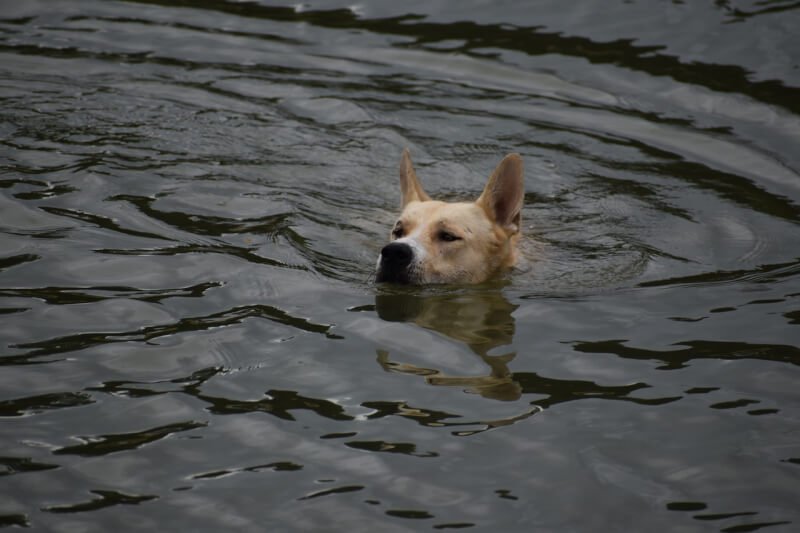You’re about to embark on a journey towards unleashing your dog’s full potential and creating a balanced and harmonious relationship. At K9 Training and Behavioral Consulting, we specialize in transforming unruly and disobedient canines into well-behaved and obedient companions. With our expertise and personalized approach, we address various behavioral issues such as aggression, separation anxiety, and leash pulling. Through positive reinforcement techniques and effective training methods, we aim to equip you with the necessary tools and knowledge to strengthen the bond with your furry friend. Get ready to witness remarkable transformations in your dog’s behavior as we guide you towards a happier and healthier partnership.

The Importance of K9 Training
Enhancing Communication and Bonding
K9 training plays a crucial role in enhancing communication and bonding between you and your furry friend. By participating in training sessions together, you begin to understand each other’s cues, body language, and signals. This shared language allows for effective communication, ensuring that your dog understands your expectations and commands. As you work together during training, you strengthen the bond between you and your canine companion, creating a stronger and more fulfilling relationship.
Ready for Cat Trivia?
Test your knowledge about cats!

Promoting Canine Well-being
Training is not just about teaching your dog basic commands; it also promotes their overall well-being. Dogs are intelligent creatures who thrive on mental stimulation and physical activity. Engaging in regular training sessions provides the mental and physical exercise they need to stay happy and healthy. Additionally, training sessions give your dog a sense of purpose and accomplishment, boosting their confidence and overall happiness.
Preventing Behavioral Issues
One of the most critical aspects of K9 training is its ability to prevent behavioral issues. Dogs, like humans, can develop undesirable behaviors if not properly trained. Training sessions provide an opportunity to set boundaries, establish rules, and reinforce positive behavior. By teaching your canine companion appropriate behaviors from the beginning, you can effectively prevent problems such as aggression, separation anxiety, fear, and resource guarding. Investing time and effort in training early on can save you from potential challenges in the future.
Different Approaches to K9 Training
Classical Conditioning
Classical conditioning is a widely used approach in K9 training. It involves associating a neutral stimulus with a meaningful one to elicit a desired response. This technique relies on creating positive associations and avoiding negative experiences. For example, by pairing the sound of a clicker with a treat, you can teach your dog to associate the clicker with reward, making it an effective tool for training.
Operant Conditioning
Operant conditioning focuses on shaping behavior through rewards and consequences. This approach uses positive reinforcement to encourage desired behaviors and negative reinforcement or punishment to discourage unwanted behaviors. By rewarding your dog when they exhibit the desired behavior, such as sitting or staying, you reinforce that behavior and increase the likelihood of it being repeated.
Clicker Training
Clicker training is a specific form of operant conditioning that utilizes a small handheld device called a clicker. The clicker emits a distinct sound that serves as a signal to indicate when the dog has done something correctly. This technique allows for precise timing and clear communication, making it an effective method for teaching a wide range of behaviors. Clicker training is particularly useful in shaping complex behaviors or tricks.
Basic Commands in K9 Training
Sit
The “sit” command is one of the fundamental commands in K9 training. Teaching your dog to sit not only demonstrates control but also helps prevent impulsive behavior and promotes a calm and obedient demeanor. To train your dog to sit, hold a treat close to their nose and move it upward. As your dog’s head rises to follow the treat, their bottom will naturally lower to the ground. Once they are in a sitting position, reward them with the treat and praise.
Stay
The “stay” command is vital for keeping your dog safe and under control in different situations. Start by having your dog sit in front of you. Extend your palm towards them and firmly say “stay.” Take a step back while maintaining eye contact and hold your hand up as a visual cue. If your dog remains in the sitting position, return to them, reward them with a treat, and praise. Gradually increase the duration and distance of the “stay” command to build their ability to hold the position.
Come
The “come” command is crucial for calling your dog to return to you promptly. Begin by attaching a long leash to your dog’s collar. Step a few feet away from them, get down to their level, and call them by saying “come” in an enthusiastic tone. Gently tug on the leash to guide them towards you if needed. When your dog reaches you, offer plenty of praise and rewards. Practice the “come” command in different environments to reinforce their response.
Leave It
The “leave it” command is essential for preventing your dog from picking up or engaging with potentially harmful objects. Hold a treat in your hand, close your fist, and place it in front of your dog’s nose. Wait for them to sniff, paw, or lick your hand. As soon as they lose interest and back away, say “leave it” in a firm but gentle tone. Open your hand and give them a treat from your other hand instead. Repeat this process, gradually increasing the difficulty by using more tempting items.
Heel
The “heel” command teaches your dog to walk calmly and closely alongside you without pulling or wandering off. Begin by standing with your dog on your left side. Hold a treat in your hand at your dog’s nose level, and then start walking. As you move, say “heel” in a clear and confident tone. If your dog starts to pull or go ahead, gently turn around and walk in the opposite direction. When your dog returns to your side and walks in sync with you, reward them with the treat and praise.
Advanced Training Techniques
Off-Leash Training
Off-leash training is an advanced technique that allows your dog to respond to commands even without the constraint of a leash. This technique requires a high level of trust, reliability, and obedience from your furry friend. Start by practicing in a safe and enclosed area, gradually increasing the challenges and distractions. Use verbal cues and signals to communicate your expectations clearly, rewarding your dog for their response. Off-leash training provides your dog with freedom while maintaining their ability to obey your commands.
Agility Training
Agility training is a popular sport that involves navigating a series of obstacles, such as jumps, tunnels, and weave poles, in a timed manner. This activity not only helps build your dog’s physical fitness but also boosts their mental sharpness and problem-solving skills. Agility training strengthens the bond between you and your dog as you work together to conquer challenges and complete tasks. It is a fun and engaging way to keep your dog physically and mentally stimulated.
Scent Detection Training
Scent detection training taps into dogs’ incredible sense of smell and natural hunting instincts. This training involves teaching your dog to identify and locate specific scents, such as drugs, explosives, or missing persons. Scent detection training provides mental stimulation and a sense of accomplishment for your dog while also serving a practical purpose in areas such as search and rescue or law enforcement. It is an advanced training technique that requires patience, consistency, and expert guidance.

Behavioral Consulting for Dogs
Assessing and Understanding Problematic Behaviors
Behavioral consulting for dogs involves a comprehensive assessment and understanding of problematic behaviors displayed by your furry companion. A professional behavioral consultant will observe your dog’s behaviors, analyze their triggers, and identify any underlying issues contributing to the undesirable behavior. Understanding the root causes of your dog’s behavior is essential in developing effective behavior modification plans.
Developing Solutions and Behavior Modification Plans
Once the problematic behaviors have been assessed, a behavioral consultant will develop a customized behavior modification plan tailored to your specific dog’s needs. This plan will outline the strategies, techniques, and exercises required to address the undesirable behaviors. The consultant will work closely with you, providing guidance, support, and regular progress evaluations to ensure the successful implementation of the behavior modification plan.
Common Behavioral Issues Addressed in Consulting
Aggression
Aggression is one of the most challenging and potentially dangerous behavioral issues in dogs. It can manifest as growling, barking, lunging, or biting. A professional behavioral consultant will assess the underlying causes of aggression and develop strategies to manage and modify the behavior. This may involve techniques such as desensitization, counter-conditioning, and positive reinforcement to create a more secure and relaxed environment for your dog.
Separation Anxiety
Separation anxiety refers to excessive distress when your dog is left alone. It can lead to destructive behaviors, excessive barking, or attempts to escape, causing stress for both your dog and your household. A behavioral consultant can help identify the triggers for separation anxiety and develop a behavior modification plan that gradually desensitizes your dog to being alone while implementing coping mechanisms and environmental enrichment.
Fear and Phobias
Fear and phobias can significantly impact a dog’s quality of life and their ability to function in various environments. Whether it is fear of loud noises, strangers, or specific objects, a behavioral consultant can help your dog overcome their fears through systematic desensitization and counter-conditioning techniques. These approaches gradually introduce the fear-inducing stimulus at a low intensity, paired with positive associations to rewire your dog’s response.
Resource Guarding
Resource guarding is when a dog displays aggressive or possessive behaviors over certain items, such as food, toys, or even territory. A behavioral consultant can help address resource guarding by implementing behavior modification techniques that teach your dog to associate positive outcomes with sharing and relinquishing their prized possessions. Through structured training and a focus on rewarding desirable behaviors, resource guarding can be managed effectively.

Building a Positive Training Environment
Positive Reinforcement
Creating a positive training environment involves the use of positive reinforcement. Instead of focusing on punishment or corrections, positive reinforcement rewards your dog for exhibiting desired behaviors. This can be in the form of treats, praise, toys, or affection. By consistently rewarding your dog for good behavior, you motivate them to repeat those behaviors and create a positive association with training.
Establishing Routine and Consistency
Consistency is key in building a positive training environment. Dogs thrive on routine, so establishing a consistent training schedule helps them understand what is expected of them. Whether it’s the timing of meals, potty breaks, or training sessions, sticking to a routine provides structure and clarity for your dog. Consistency also extends to using the same cues and commands consistently, ensuring clear communication.
Providing Mental and Physical Stimulation
A positive training environment goes beyond just obedience training. Dogs are intelligent creatures that require mental and physical stimulation to lead fulfilling lives. Incorporate activities such as puzzle toys, interactive games, and regular exercise into your dog’s routine. This not only keeps them physically fit but also engages their minds, preventing boredom and destructive behaviors.
Importance of Professional Guidance
Experience and Expertise
Seeking professional guidance for K9 training and behavioral consulting is invaluable. Trained professionals have years of experience and expertise in understanding canine behavior, training methods, and behavior modification techniques. They can accurately assess your dog’s needs, determine the underlying causes of behavior issues, and develop effective strategies to address them. Their knowledge and guidance can make the training process smoother and more successful.
Tailored Training and Consulting
Every dog is unique, with their own personality, history, and needs. Professional trainers and consultants understand this individuality and provide tailored training and consulting services. They develop personalized plans that cater to your dog’s specific requirements, ensuring effective and efficient results. From basic obedience training to addressing complex behavioral issues, professional guidance ensures that your dog receives the most appropriate and targeted training.
Addressing Individual Needs
Professional trainers and consultants are equipped to address not only your dog’s needs but also your needs as a dog owner. They understand that training is a collaborative effort and will assist you in developing the necessary skills and knowledge to effectively communicate with your dog. They provide ongoing support, answer your questions, and guide you in maintaining the training and behavioral modification techniques learned during the process. This ensures a positive and lasting impact on both you and your furry companion.

K9 Training and Behavioral Consulting Techniques
One-on-One Training Sessions
One-on-one training sessions with a professional trainer provide focused and individualized attention to your dog’s training needs. These sessions allow for personalized coaching, addressing specific behavior issues and tailoring techniques to your dog’s unique personality and learning style. One-on-one sessions also provide valuable opportunities for you to learn and practice the necessary skills to maintain the training at home.
Group Classes
Group classes are a popular and cost-effective option for K9 training. These classes offer a socialization aspect, allowing your dog to interact with other dogs and people in a controlled environment. Group classes typically cover basic obedience commands and can be a fun and exciting experience for both you and your dog. Working alongside other dog owners also provides an opportunity for shared learning and support.
In-Home Consulting
In-home consulting is particularly beneficial for addressing behavioral issues that occur within your dog’s familiar environment. A behavioral consultant can observe the specific triggers and dynamics at play, providing insights and solutions that are specifically tailored to your home environment. This approach ensures that the strategies implemented are practical and effective in real-life situations.
The Role of Dog Owners in Training
Consistency and Reinforcement
As a dog owner, your consistency and reinforcement play a vital role in the success of training. It is crucial to consistently reinforce desired behaviors by rewarding and praising your dog when they exhibit them. Consistency also means using the same cues and commands and ensuring that family members and other caregivers follow the same approach. By reinforcing positive behaviors consistently, you create clear expectations and strengthen the training process.
Building a Strong Relationship
Training is not just about teaching your dog commands; it is also about building a strong and trusting relationship. Spend quality time with your dog, engage in play, and provide plenty of affection and attention. Building a strong bond based on love, respect, and trust enhances your dog’s willingness to learn and respond to your guidance. A strong relationship serves as the foundation for a harmonious and fulfilling partnership.
Continued Education and Maintenance
K9 training is an ongoing process that requires continued education and maintenance. As a responsible dog owner, it is important to stay updated on the latest training techniques, behavior studies, and best practices. Additionally, regularly reinforcing and practicing the learned behaviors ensures that they remain ingrained and reliable. Make training a consistent part of your dog’s routine and continue to challenge them with new exercises and commands to keep their minds stimulated.
In conclusion, K9 training and behavioral consulting are invaluable tools for enhancing communication, promoting well-being, and preventing behavioral issues in dogs. Whether you choose classical or operant conditioning, clicker training, or a combination of techniques, training provides your dog with mental and physical stimulation while strengthening your bond. Advanced techniques such as off-leash training, agility, and scent detection training further enrich your dog’s life. In cases of problematic behaviors, behavioral consulting offers tailored solutions to address issues like aggression, separation anxiety, fear, and resource guarding. By establishing a positive training environment, seeking professional guidance, and actively participating in the training process, you can create a harmonious and fulfilling relationship with your furry companion. So, embrace the importance of K9 training and enjoy the journey of learning and growing with your dog!



